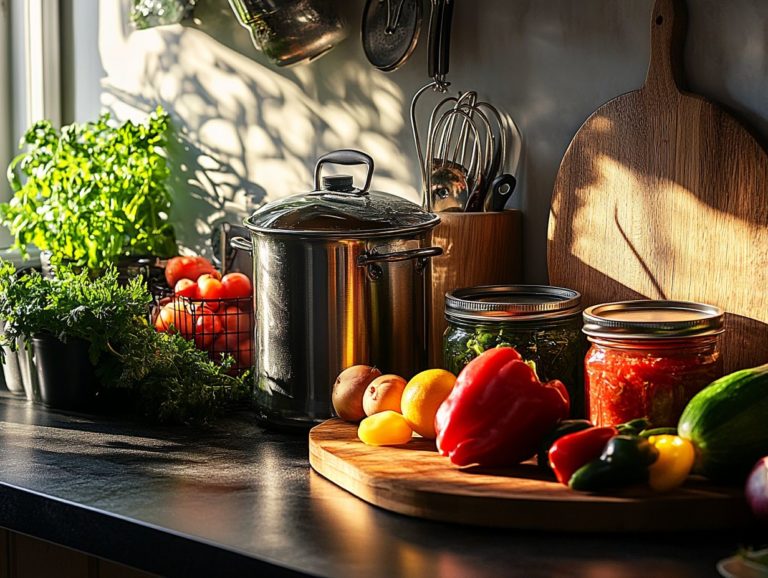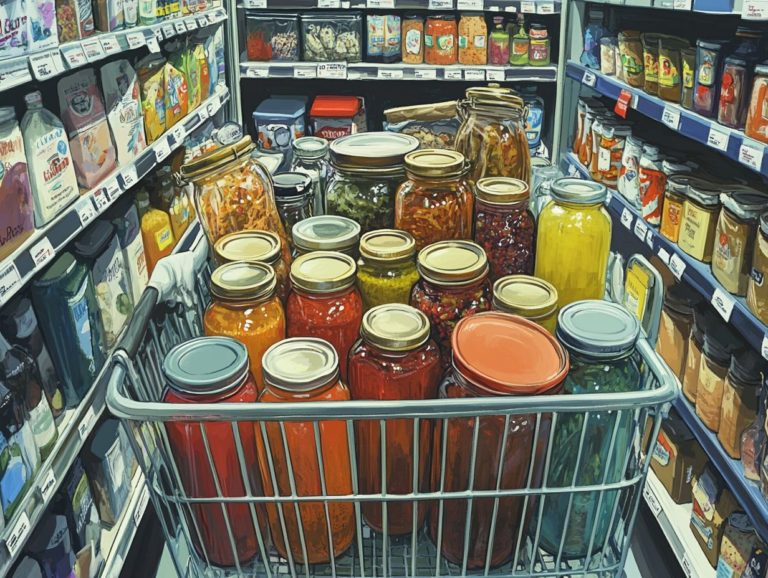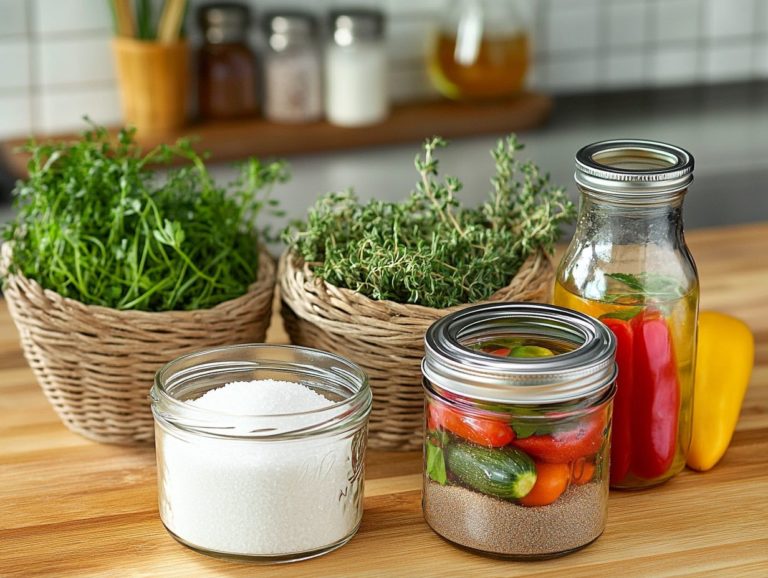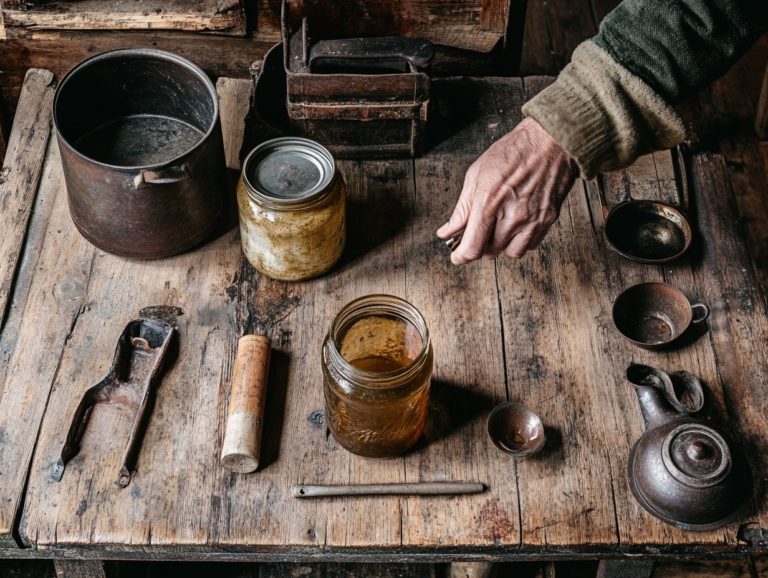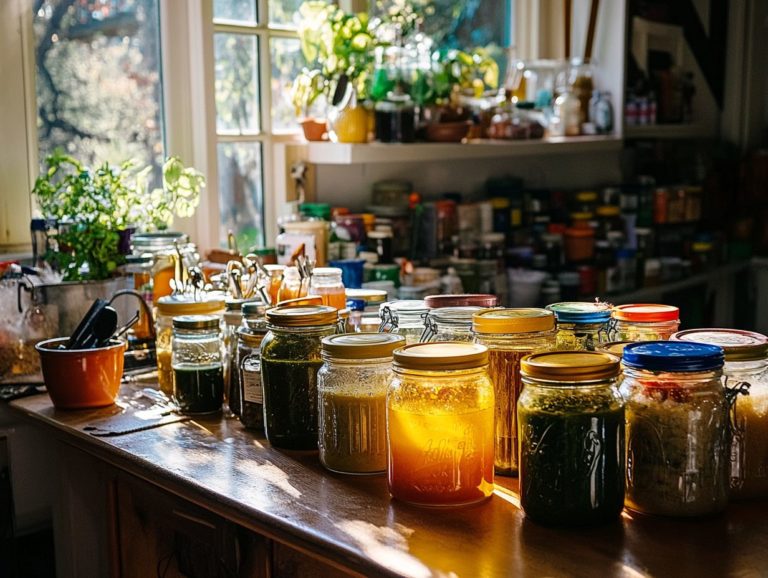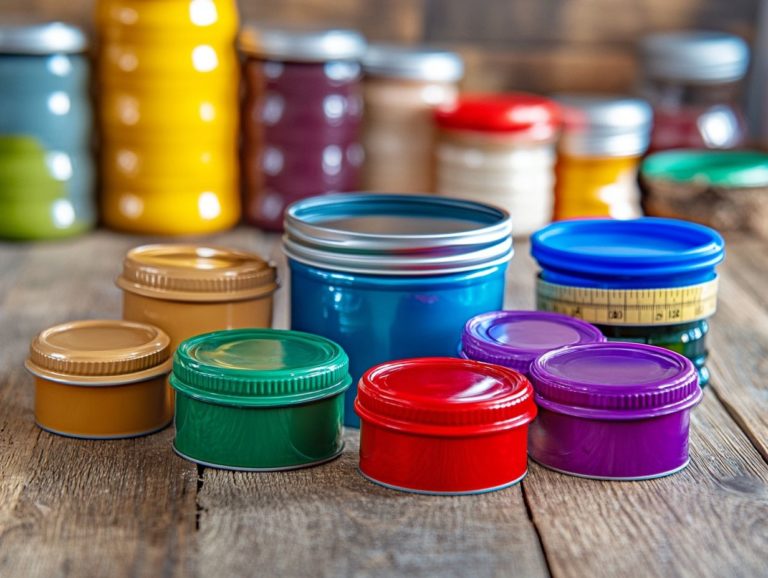Canning Pots: Which One Is Right for You?
Canning is a time-honored method of preserving food. It enables you to savor the vibrant flavors of summer throughout the entire year. This skill is essential for emergency preparedness.
Choosing the right canning pot, along with other canning equipment, is crucial for safe and effective canning. This article covers the types of canning pots. We ll explain pressure canners and water bath canners and their roles in the canning process, helping you understand how to preserve different types of food.
You ll also discover key factors to consider when selecting a canning pot, including size, material, and stove compatibility.
Explore our top recommendations tailored for both beginners and seasoned canners. We ll include essential kitchen tools like a jar lifter and silicone ladle, along with tips for maintenance and common pitfalls to sidestep.
Get ready to take your canning skills to new heights! Your delicious creations await!
Contents
Key Takeaways:
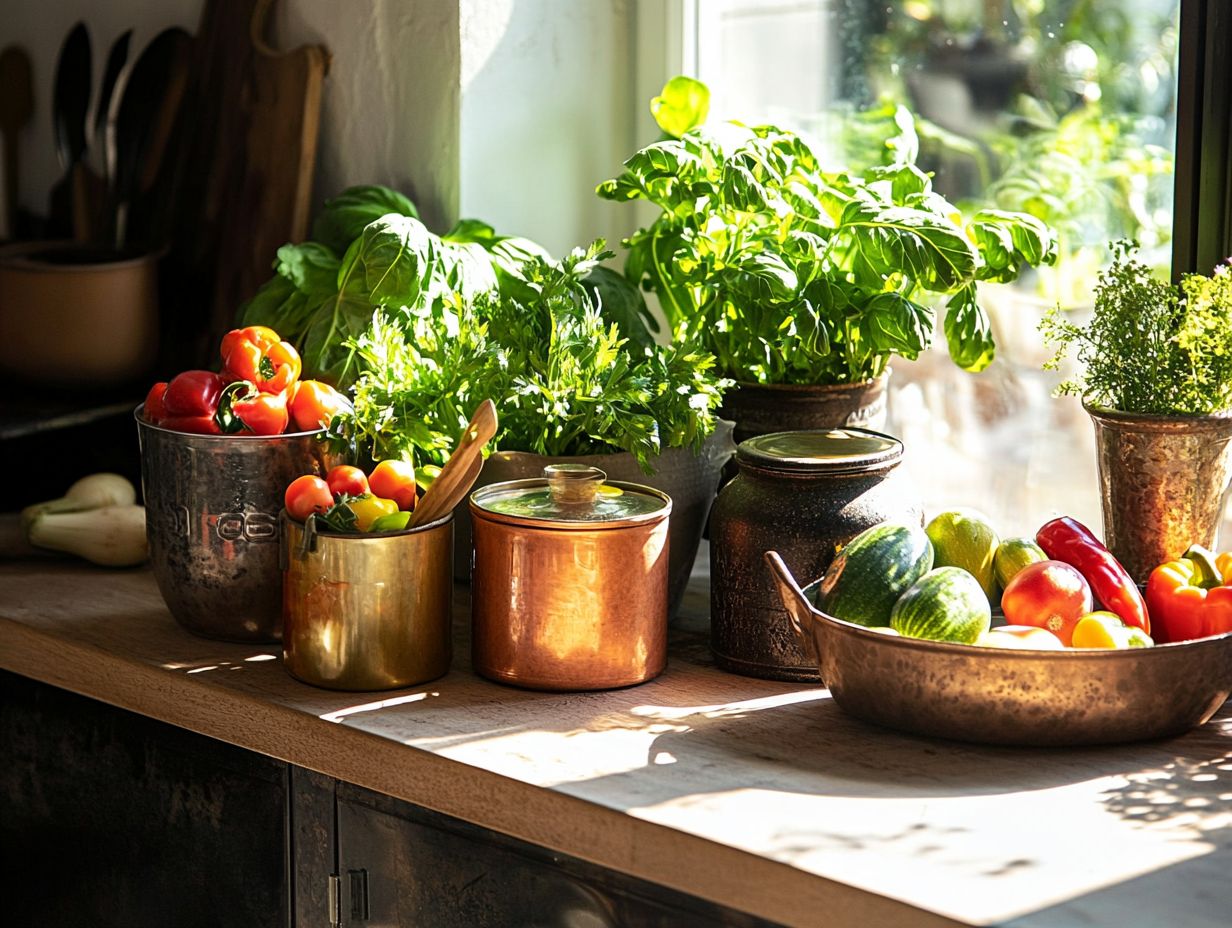
- Choose a canning pot that suits your needs and experience level. Think about the type of food you’ll be preserving, from high-acid foods like tomatoes to low-acid foods such as vegetables.
- Pressure canners are best for low-acid foods, such as vegetables and meats. Water bath canners are suitable for high-acid foods like tomatoes and fruits. Always use the correct pot for your canning recipe.
- Keep your canning pot in top shape by cleaning it well and storing it properly. Invest in quality canning jars to avoid common mistakes that could jeopardize safety.
What is Canning and Why Do You Need a Canning Pot?
Canning is an art of food preservation. It seals your favorite ingredients in airtight containers to guard against spoilage. A canning pot becomes your trusted ally in this endeavor, ensuring both safety and effectiveness when preserving high-acid and low-acid foods.
This technique allows you to enjoy seasonal produce all year long while keeping the nutritional quality and vibrant flavors intact. When you choose a canning pot designed specifically for this purpose, you gain precise temperature control and the necessary pressure for safe food processing.
According to USDA guidelines (United States Department of Agriculture), you can use a water bath canner for high-acid foods like tomatoes and fruits. Low-acid foods such as vegetables and meats require pressure canning to effectively eliminate harmful bacteria. By adhering to these standards, you enhance the safety and longevity of your canned goods and unlock the rewarding experience that comes with mastering the craft of canning.
Types of Canning Pots
Understanding the different types of canning pots available is essential for achieving success in food preservation. For a comprehensive look at selecting the right jars, check out choosing the right canning jars, as each pot serves a unique purpose in the canning process, especially when it comes to pressure canning versus water bath methods.
Choosing the right canning pot, be it stainless steel or another material, can profoundly influence the results of your homemade culinary endeavors. For a deeper dive into the essentials, check out understanding canning equipment, from vibrant jams to perfectly preserved vegetables.
Pressure Canners vs Water Bath Canners
When preserving foods safely, grasping the difference between pressure canning and water bath canning is essential. This distinction is especially important based on the types of foods you’re processing think high-acid foods like tomatoes versus low-acid foods such as green beans. Each method serves a unique purpose in the canning process, impacting both safety and flavor retention in your preserved creations.
If you re new to canning, it s vital to understand that high-acid foods, like fruits and pickles, can be successfully processed using a water bath. This method capitalizes on the acidity to thwart the growth of harmful bacteria. Conversely, low-acid foods, including vegetables and meats, require pressure canning to achieve the elevated temperatures necessary for safety. Failing to select the appropriate method can jeopardize not just the quality of your food but also the health of those who enjoy it.
Following proper canning guidelines is crucial. Ensure all jars are securely sealed and safeguarded against potential spoilage.
Factors to Consider When Choosing a Canning Pot
When selecting the perfect canning pot, weigh essential factors like size and capacity, material and durability, and compatibility with various stove types. Understanding the differences in methods, such as pressure canning vs. water bath, ensures the pot aligns with your unique canning needs.
Choose a canning pot made from robust materials such as stainless steel or granite ware, a type of cookware made with a ceramic coating. The right choice affects the volume of food you can preserve and plays a crucial role in ensuring safety and efficiency throughout the canning process. If you’re unsure about the process, consider exploring how to know if canning is right for you.
Size and Capacity
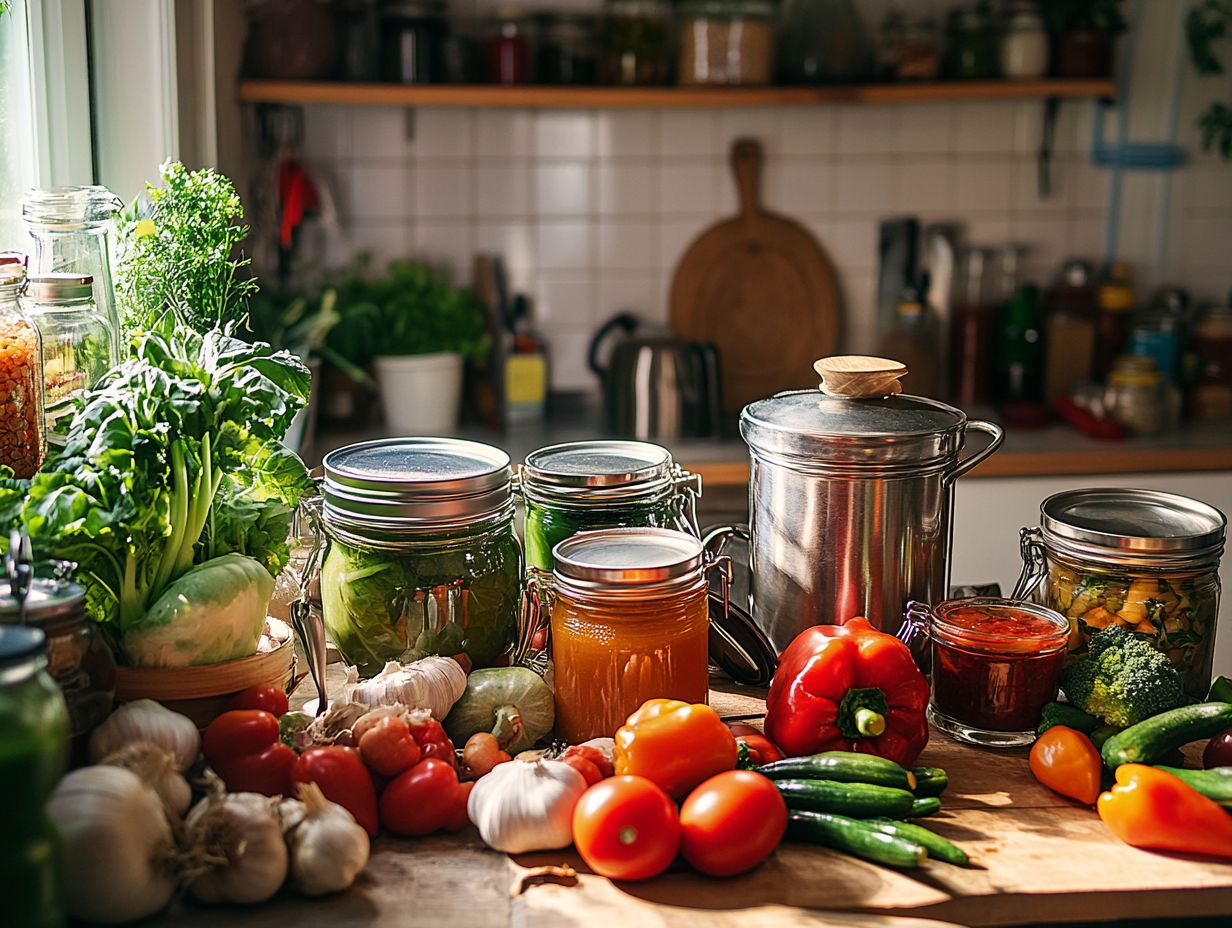
The size and capacity of your canning pot are crucial. They dictate how many jars you can process at once, which greatly impacts how quickly you can make food at home.
Imagine this: a 21-quart pot can hold up to seven quart jars, making it perfect for your ambitious canning projects during the harvest season. In contrast, a smaller 12-quart pot might limit you to just a couple of pint jars, stretching out your canning process unnecessarily.
This difference not only affects how quickly you prepare, preserve, and enjoy your home-canned delights but also influences your efficiency in using ingredients, minimizing waste while maximizing flavor.
Material and Durability
Prioritize material and durability when selecting a canning pot. These factors greatly influence both the longevity of your equipment and the quality of your preserved food.
Stainless steel and granite ware stand out as popular choices. Stainless steel is non-reactive and can handle high temperatures, ensuring it won t compromise your food’s flavor. Granite ware is lightweight and features a non-porous surface, but it may chip and distribute heat unevenly, potentially causing hot spots.
These material characteristics significantly impact your canning performance. Consider your specific needs before making a selection.
Compatibility with Stove Types
Compatibility with various stove types is essential for effective food preservation. This is especially important if you’re using an electric pressure canner or other specialized cooking equipment.
Consider whether you’re working with a gas, electric, or induction stove. Each type interacts differently with canning gear. Gas stoves provide quick, adjustable heat, making them a favorite among seasoned canners. If you have an electric stove, your choice of pot is crucial; not all pots distribute heat evenly.
If you’re using induction stoves, ensure your pot is made from magnetic-compatible materials. Don t miss out on canning pots labeled as induction-ready. Understanding these dynamics enhances your canning experience, allowing you to create delicious, safely preserved foods with confidence.
Recommended Canning Pots for Different Needs
Choosing the right canning pot depends on your experience level, whether you’re a newcomer starting your jam-making journey or a seasoned canner looking to learn how to choose the right canning method to perfect your craft.
Brands like Cuisinart, Presto, All-Clad, and Le Creuset offer options that cater to various needs. Each brand features distinctive attributes to accommodate different skill sets and types of food preservation, ensuring you find the ideal pot to elevate your canning experience.
Beginner Canners
If you’re just starting, look for user-friendly options that simplify the canning process.
Intermediate Canners
For those with some experience, consider pots that offer versatility for different types of preserves.
Advanced Canners
If you’re an expert, seek high-capacity pots designed to handle larger batches efficiently.
Ready to elevate your canning game? Choose the perfect pot today!
Best Canning Pots for Beginners
As you embark on your canning journey, selecting a user-friendly canning pot is absolutely essential. Get ready to preserve your favorite foods! Brands like Ball and Progressive International offer outstanding options that simplify the entire process.
Many of these pots come with easy-to-follow guides, making them perfect whether you’re taking cooking classes or just dipping your toes into the world of food preservation.
You’ll find that these canning pots are built to last. They feature durable construction and spacious designs that allow you to process large batches of fruits, vegetables, or sauces in one go.
- Lid
- Rack for jar stability
- Convenient handles for easy lifting
These features can significantly ease your learning curve.
The instructional materials provide clear, step-by-step directions, making the canning process not only accessible but also far less intimidating. This focus on ease of use empowers you to build your confidence as you master the art of preserving food, setting the stage for enjoyable and successful canning experiences.
Top Picks for Experienced Canners and Advanced Techniques
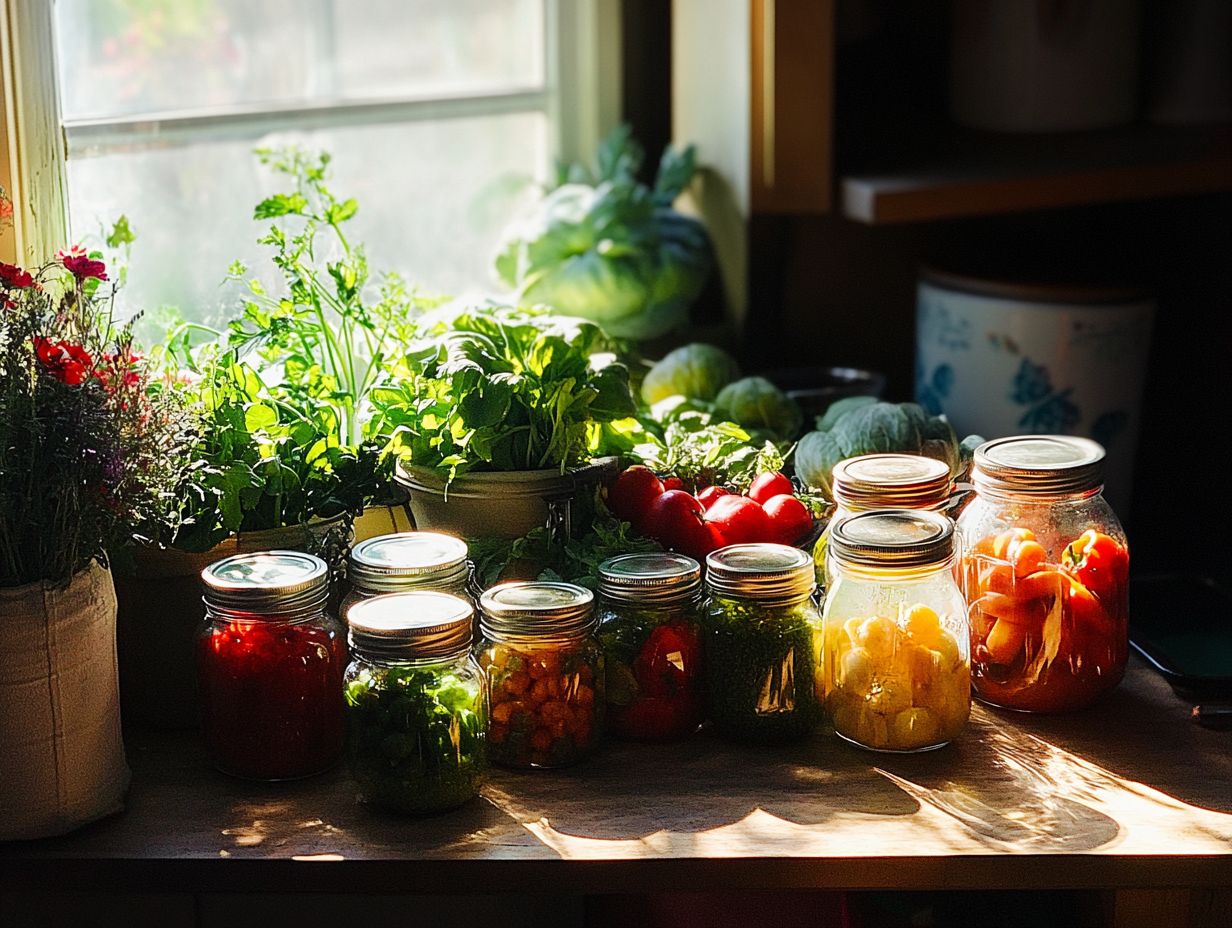
As an experienced canner, you likely seek advanced canning pots that deliver both durability and efficiency. Brands like All-Clad and Le Creuset stand out for their exceptional construction and performance, making them a wise choice for your canning endeavors.
These pots not only accommodate larger volumes but also integrate seamlessly with vacuum sealing, elevating your food preservation experience.
With options that feature heavy-duty stainless steel and reinforced rivets, these canning pots can endure high temperatures and prolonged use perfect for those extensive canning sessions you enjoy.
Many pots come equipped with sophisticated gauges for precise temperature control, ensuring even heat distribution an essential factor for achieving safe and effective canning results. Ergonomic handles add comfort, making it easier for you to lift and maneuver, especially with substantial batches of fruits and vegetables.
Let s not overlook their sleek, modern designs. These pots serve as functional tools and stylish additions to your kitchen, seamlessly blending form and function.
Tips for Maintaining and Using Canning Pots
Proper maintenance and usage of canning pots are essential for ensuring your safety and extending the lifespan of your equipment. This includes regular cleaning and adhering to best practices while canning.
By utilizing tools like a jar lifter and silicone ladle, you can enhance the canning process, making it safer and more efficient for your culinary endeavors.
Proper Cleaning and Storage
Proper cleaning and storage techniques for your canning pots are essential to maintain their effectiveness and longevity, especially for materials like stainless steel and granite ware that demand specific care. Regular cleaning prevents contamination and ensures your canning pots are always ready for your next food preservation project.
To achieve optimal results, follow best practices tailored to each material type. For stainless steel, a simple vinegar solution works wonders in removing stubborn stains. Granite ware should be hand-washed to prevent chipping. Always ensure your canning pots are completely dry before storing them to avoid rust and mold.
This meticulous attention to cleanliness not only prolongs the lifespan of your pots but also plays a crucial role in preventing foodborne illnesses, giving you peace of mind as you preserve your delicious homemade goods.
Ready to start your canning journey? Dive into the world of canning now and enjoy the delicious rewards!
Common Mistakes to Avoid
Don’t let mistakes ruin your home canning adventure! Avoiding common mistakes during the canning process is essential for food preservation. Understanding these pitfalls ensures your canned goods are safe and delicious.
One prevalent error many canners make is failing to properly sterilize their jars, which can cause contamination. It s vital to adhere to tested recipes; changing ingredients or methods can affect the taste and safety of your food.
Another significant blunder is overfilling jars, which can hinder a proper seal and create a breeding ground for bacteria. Being aware of these missteps helps you improve the quality and safety of your canned foods, ultimately safeguarding your health and well-being.
Frequently Asked Questions
Which Canning Pot is Best for Beginners?
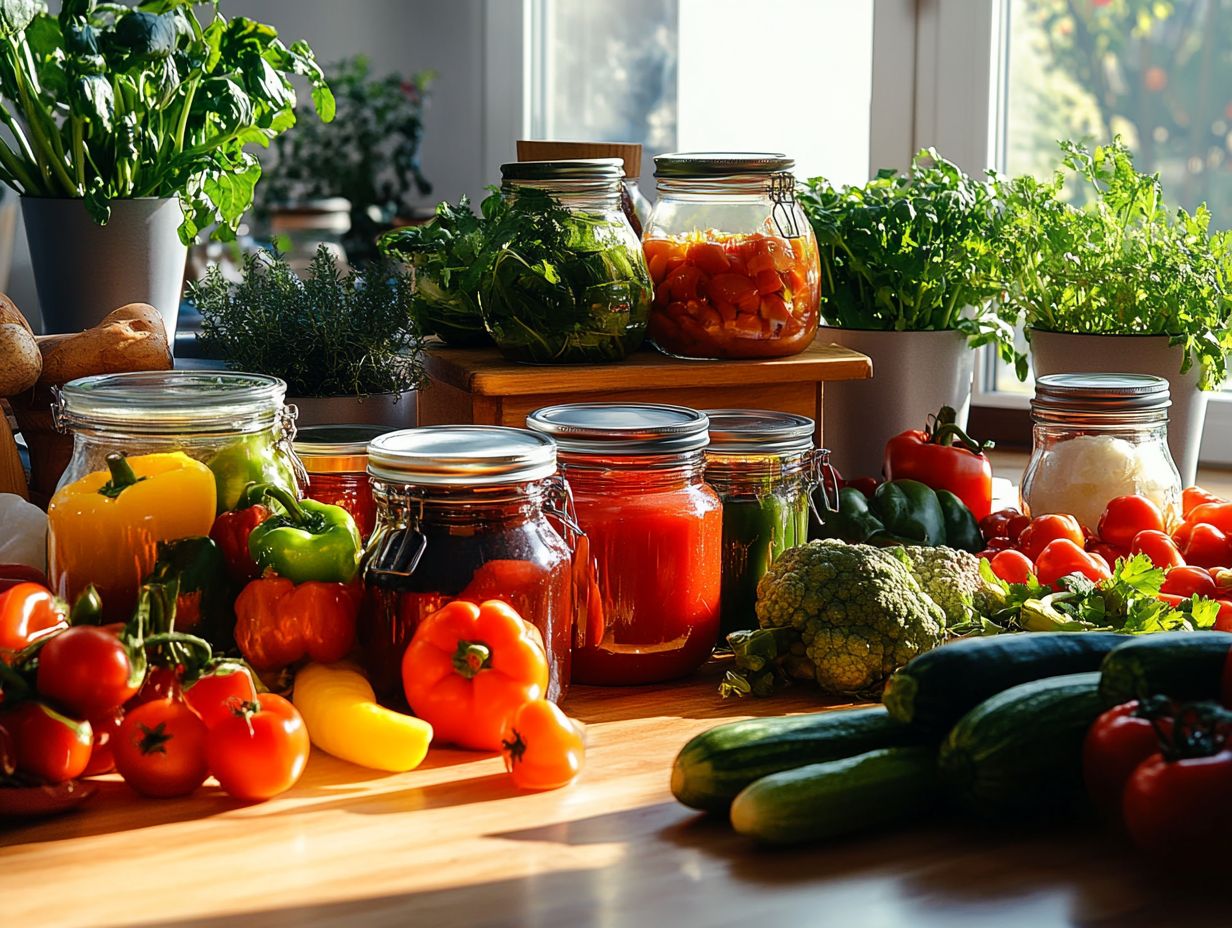
For beginners, we recommend starting with a simple water bath canner. They are easy to use and are typically less expensive than pressure canners.
What is the difference between a water bath canner and a pressure canner?
A water bath canner is used for high-acid foods (like jams) such as jams, jellies, and pickles. A pressure canner is necessary for low-acid foods (like vegetables), including meats and seafood.
Can I use a regular pot for canning?
No, it is not recommended to use a regular pot for canning as it may not maintain a consistent and safe temperature for preserving food. It is best to use a specifically designed canning pot.
What size canning pot should I get?
The size of your canning pot depends on the size of your canning jars. For pint jars, a 12-quart pot is recommended, while a 16-quart pot is best for quart jars.
What material is best for a canning pot?
Stainless steel and enamel-coated canning pots are the most popular choices. They are durable, easy to clean, and can withstand high heat. However, aluminum canning pots are also safe to use as long as they are not damaged or corroded.
Do I need a special canning pot for induction stovetops?
Yes, if you have an induction stovetop, you will need a canning pot with a flat and magnetic bottom. Stainless steel and cast iron pots work well on induction stoves.
Make your next preserving session safe and satisfying get started with canning today!

